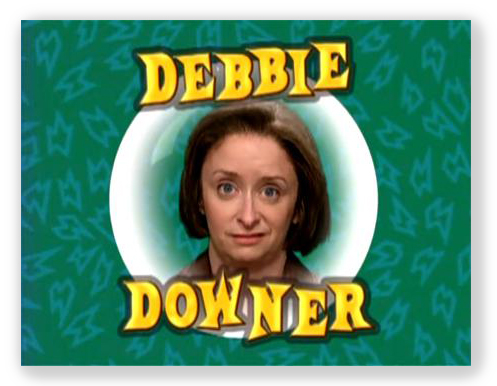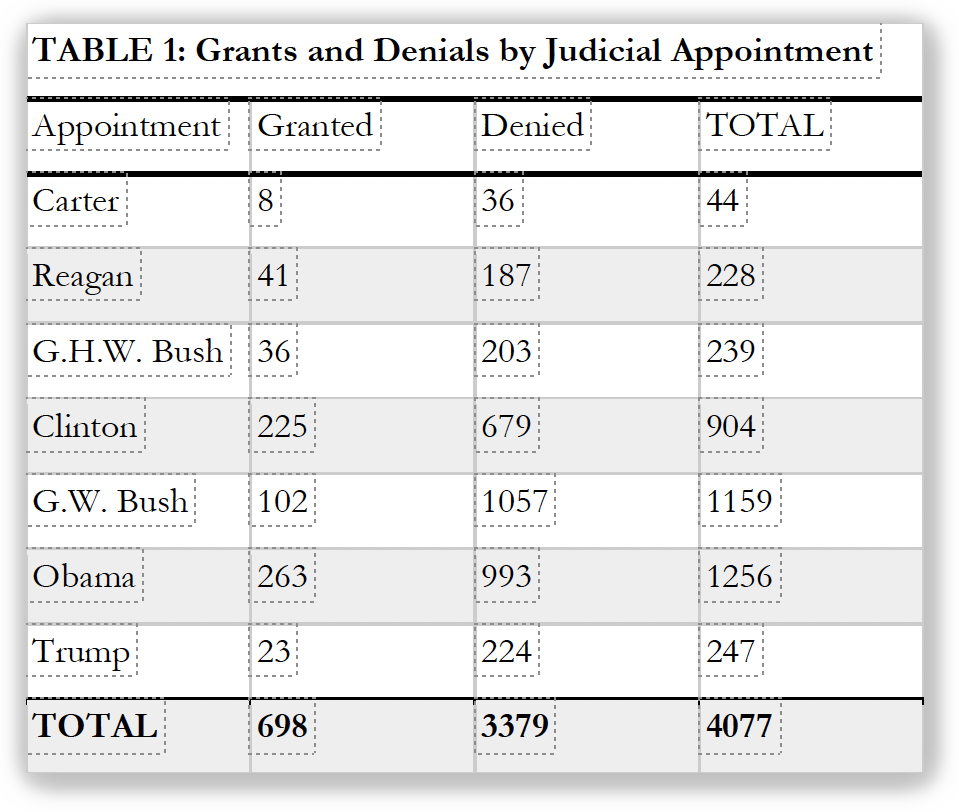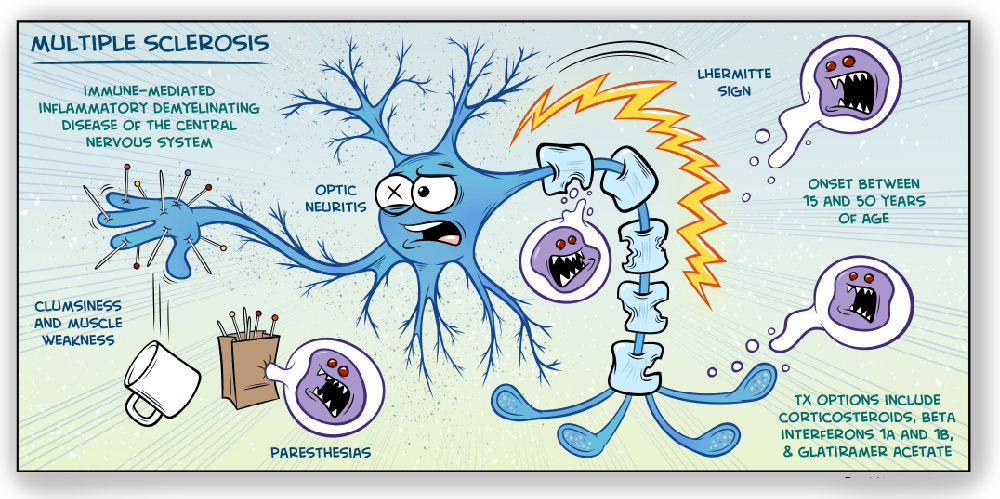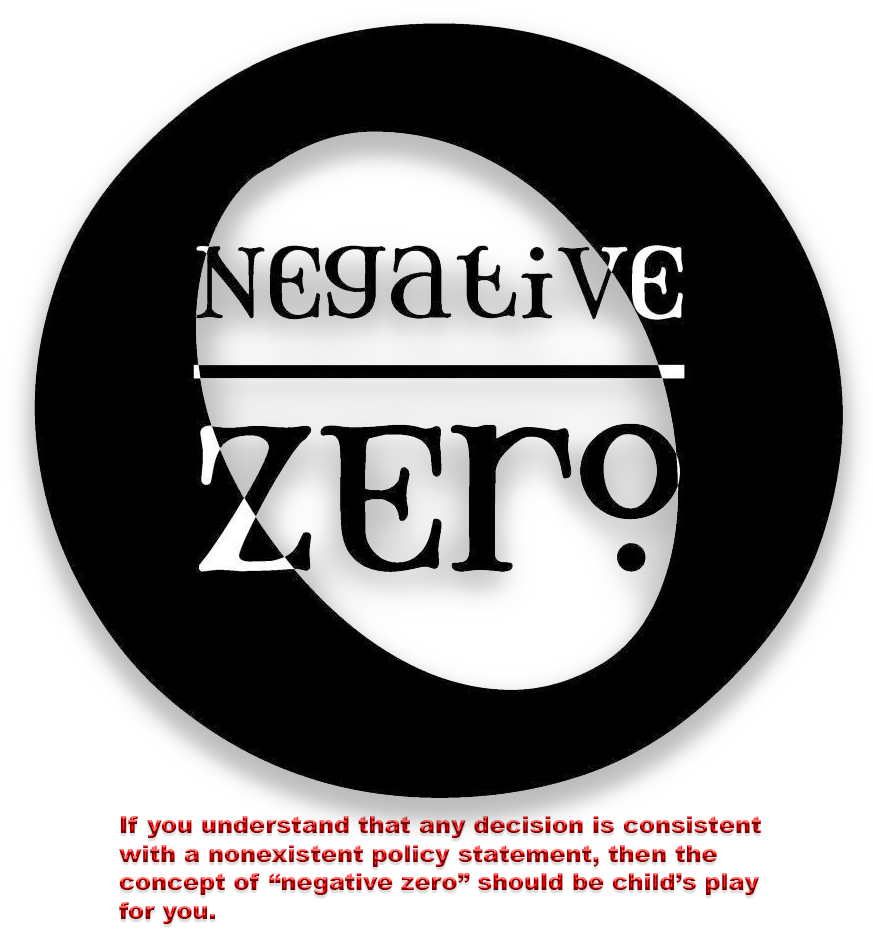We post news and comment on federal criminal justice issues, focused primarily on trial and post-conviction matters, legislative initiatives, and sentencing issues.

GUESS THEY MEANT WHAT THEY SAID…
 Part 1: About 80 days ago, the 6th Circuit ruled in United States v. Jones that because the Sentencing Commission – due to having too few members to even hold a meeting – had not been able to amend compassionate release policy statement § 1B1.13, district judges had no obligation to follow the old version of that Sentencing Guideline.
Part 1: About 80 days ago, the 6th Circuit ruled in United States v. Jones that because the Sentencing Commission – due to having too few members to even hold a meeting – had not been able to amend compassionate release policy statement § 1B1.13, district judges had no obligation to follow the old version of that Sentencing Guideline.
A little background: At the same time Congress enacted the Sentencing Reform Act of 1984, it established the Sentencing Commission. Among the Commission’s duties was a directive in 28 USC § 994(t) that it define in detail what constituted an “extraordinary and compelling reason” for a sentence reduction (what we commonly call compassionate release).
The Commission’s response was policy statement § 1B1.13, which faithfully adhered to the statute by – among other things – directing that a compassionate release could only be requested by the Director of the Federal Bureau of Prisons. After all, that was what 18 USC § 3582(c)(1)(A) said at the time. But in 2018, Congress change the statute in the First Step Act to permit prisoners to bring their own motions for compassionate release if the BOP turned down their request for the agency to do so.. Of course, the BOP turned everyone down: Mother Teresa herself could not have wrangled a compassionate release motion out of the Director.
 Normally, the Sentencing Commission would have amended § 1B1.13 in due course, updating it to reflect that compassionate release motions may be coming from inmates as well as the rare filing by the Director of the BOP. However, the Sentencing Commission was having its own crisis at the time. Three members left the Commission at the end of 2018 when their terms expired, and President Trump had not nominated any replacements. When he finally came up with a few names months later, the Senate never got around to confirming them. As a result, the Commission has lacked a quorum for two years now, and has been able to do absolutely nothing.
Normally, the Sentencing Commission would have amended § 1B1.13 in due course, updating it to reflect that compassionate release motions may be coming from inmates as well as the rare filing by the Director of the BOP. However, the Sentencing Commission was having its own crisis at the time. Three members left the Commission at the end of 2018 when their terms expired, and President Trump had not nominated any replacements. When he finally came up with a few names months later, the Senate never got around to confirming them. As a result, the Commission has lacked a quorum for two years now, and has been able to do absolutely nothing.
Thus, we have a revised compassionate release statute on the books, but an enabling policy statement that is still rooted in the Dark Ages.
That old policy statement set restrictive definitions as to what constitutes “extraordinary and compelling” reasons for a reduction, and said that any reason other than those listed in § 1B1.13 had to be approved by the Director. As well, § 1B1.13 required the judge – among other things – to determine that the prisoner “is not a danger to the safety of any other person or to the community, as provided in 18 U.S.C. § 3142(g).”
That brings you up to date. Now, for today’s case:
Jones described a three-step process for deciding compassionate release motions: First, a prisoner must show extraordinary and compelling reasons for a sentence reduction. If that showing is made, the movant must then show that the motion is consistent with any applicable policy statement issued by the Sentencing Commission. If he or she crosses that hurdle, the prisoner must finally show after considering the sentencing factors of 18 USC § 3553(a), the court ought to grant the motion. Jones’s three-step came with one big asterisk: where prisoners were moving for compassionate release on their own – instead of the motion being brought by the BOP Director – the courts should skip Step Two.
Paul Sherwood filed for compassionate release under 18 USC § 3582(c)(1)(A)(i), claiming that COVID-19, coupled with his age and medical condition, constituted extraordinary and compelling reasons for release. He claimed that the 18 USC § 3553(a) factors also weighed in favor of grant. The government admitted Paul’s medical conditions satisfied the “extraordinary and compelling” threshold, but it argued that his possession of prohibited sex images (read that as “kiddie porn”) meant he “remained a danger to the community, and that the § 3553(a) factors counseled against release.” The district court agreed in a two-line order that Paul “has failed to demonstrate that he is not a danger to the community. Not only was he convicted of possession… but he was convicted of transportation as well.”
 Last week, the 6th Circuit reversed the district court, telling everyone it meant what it said in Jones: § 1B1.13 is to be ignored. “While a brief order may well be sufficient for purposes of denying compassionate release,” the Circuit wrote, “where the order relies exclusively on an impermissible consideration, we must vacate the order and remand the case for further consideration.” The 6th admitted that the district judge could consider whether Paul had a “propensity to be a danger to the community upon release, as well as the nature and circumstances of his offense,” and it even presumed that “the district court’s initial balancing of the § 3553(a) factors during Paul’s sentencing remains an accurate assessment as to whether those factors justify a sentence reduction…”
Last week, the 6th Circuit reversed the district court, telling everyone it meant what it said in Jones: § 1B1.13 is to be ignored. “While a brief order may well be sufficient for purposes of denying compassionate release,” the Circuit wrote, “where the order relies exclusively on an impermissible consideration, we must vacate the order and remand the case for further consideration.” The 6th admitted that the district judge could consider whether Paul had a “propensity to be a danger to the community upon release, as well as the nature and circumstances of his offense,” and it even presumed that “the district court’s initial balancing of the § 3553(a) factors during Paul’s sentencing remains an accurate assessment as to whether those factors justify a sentence reduction…”
In other words, the Circuit telegraphed to the district court that it didn’t expect the outcome to be any different after remand, only the process used to get there.
Despite its expectations, “because the district court relied on § 1B1.13(2) as the sole basis for denying Sherwood compassionate release,” the 6th remanded the so that the district court could decide whether the § 3553(a) factors alone weighed in favor of Sherwood’s release, without considering “danger to the community.”
Part 2: In early December, the 4th Circuit ruled in United States v. McCoy that § 1B1.13 should be ignored, and – additionally – that district courts could even consider disproportionately long sentences as reasons for compassionate release.
 Paul Kratsas has spent nearly three decades in prison for a non-violent drug offense committed in Maryland. He moved for a sentence reduction, arguing that he would not get a mandatory life sentence if convicted today, and that his record of achievement in prison showed rehabilitation. The government, predictably enough, argued that there was nothing extraordinary or compelling in Paul’s showing, and anyway, he had not shown he would not be a danger to the community (even after 30 years in prison).
Paul Kratsas has spent nearly three decades in prison for a non-violent drug offense committed in Maryland. He moved for a sentence reduction, arguing that he would not get a mandatory life sentence if convicted today, and that his record of achievement in prison showed rehabilitation. The government, predictably enough, argued that there was nothing extraordinary or compelling in Paul’s showing, and anyway, he had not shown he would not be a danger to the community (even after 30 years in prison).
The district court noted that even under current law, Paul would qualify as a career offender, but “with good time credits, he has already served more than the bottom of those guidelines.” District Judge Deborah K. Chasanow obviously concluded that United States v. McCoy meant what it said. She held:
It is time to recognize that both the law and Mr. Kratsas have changed over the last three decades. His youthful refusal to acknowledge his guilt – or to accept punishment – has given way to reflective maturity. His positive attitude while in prison is demonstrated by the myriad courses, programs, and activities he has completed successfully, earning him transfer to a low security facility and the support of his mentor and family. He has demonstrated that he is not likely to be a danger to society due to his insights into his personal responsibility and the release plan he has offered. He is to be commended for his refusal to lose hope.
Paul went home last Friday… for the first time since 1992.
United States v. Sherwood, Case 20-4085, 2021 U.S. App. LEXIS 2806 (6th Cir., February 2, 2021)
United States v. Kratsas, Case No. DKC 92-208, 2021 U.S. List. LEXIS 13313 (D.Md., January 25, 2021)
– Thomas L. Root


 Good: The DC Circuit last week joined seven other circuits in holding that Guideline 1B1.13 does not limit compassionate release motions when those motions are brought by prisoners instead of the BOP.
Good: The DC Circuit last week joined seven other circuits in holding that Guideline 1B1.13 does not limit compassionate release motions when those motions are brought by prisoners instead of the BOP. Bad: The two Federal Bureau of Prisons Correctional Officerss who were supposed to be watching Jeffrey Epstein, later charged for lying to investigators and phonying up records to hide the fact they were cruising the Web instead, last week entered guilty pleas in the U.S. District Court for the Southern District of New York under deferred prosecution deals that will cost them 100 hours of community service but no prison time.
Bad: The two Federal Bureau of Prisons Correctional Officerss who were supposed to be watching Jeffrey Epstein, later charged for lying to investigators and phonying up records to hide the fact they were cruising the Web instead, last week entered guilty pleas in the U.S. District Court for the Southern District of New York under deferred prosecution deals that will cost them 100 hours of community service but no prison time. Good: Senators Amy Klobuchar (D-Minnesota and John Cornyn (R-Texas), and House Reps. Karen Bass (D-California) and Guy Reschenthaler (R-Pennsylvania) introduced the One Stop Shop Community Reentry Program Act last week, a bill that would set up reentry centers to help coordinate access to job training, medical and mental health services, and financial counseling. The centers would also help individuals land jobs, gain job-skill training, obtain driver’s licenses, fill out college and student loan applications and receive financial counseling.
Good: Senators Amy Klobuchar (D-Minnesota and John Cornyn (R-Texas), and House Reps. Karen Bass (D-California) and Guy Reschenthaler (R-Pennsylvania) introduced the One Stop Shop Community Reentry Program Act last week, a bill that would set up reentry centers to help coordinate access to job training, medical and mental health services, and financial counseling. The centers would also help individuals land jobs, gain job-skill training, obtain driver’s licenses, fill out college and student loan applications and receive financial counseling. Bad: Dr. Homer Venters, an epidemiologist tasked by a federal court with inspecting FCC Lompoc reported last week that the facility has “an alarmingly low vaccination acceptance rate among the inmate population,” due to prison staff neglecting to address inmates’ “very valid and predictable concerns” about the effects the vaccine might have on their underlying health conditions.
Bad: Dr. Homer Venters, an epidemiologist tasked by a federal court with inspecting FCC Lompoc reported last week that the facility has “an alarmingly low vaccination acceptance rate among the inmate population,” due to prison staff neglecting to address inmates’ “very valid and predictable concerns” about the effects the vaccine might have on their underlying health conditions.















